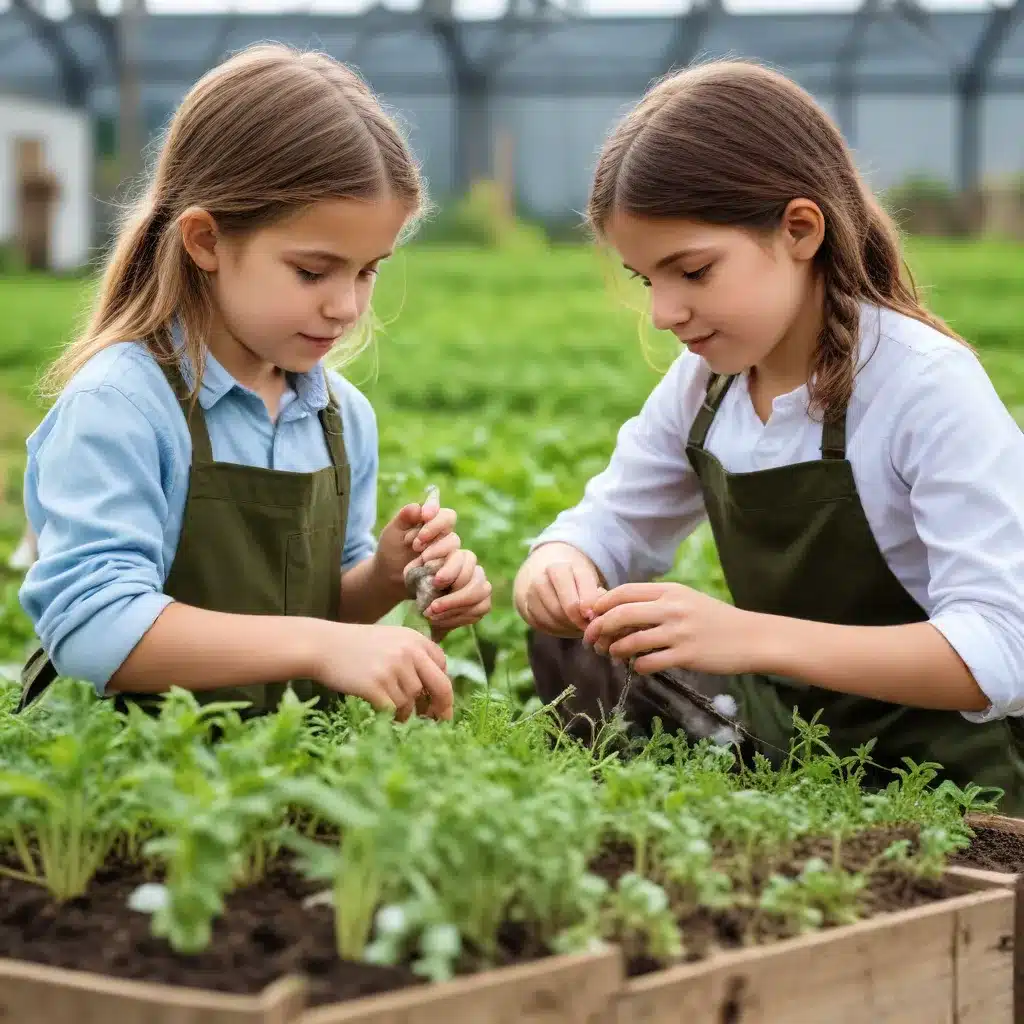
Botanical Exploration for Young Learners
Are you looking for engaging ways to teach your young farmers about the wonders of the plant world? As an educator at Crooked Pines Farm, I’m excited to share a range of STEAM-powered activities that will transform your little ones into budding botanists!
Let’s dive into the fundamental concepts of plant science, from anatomy and physiology to the awe-inspiring processes of photosynthesis and respiration. By understanding the basic building blocks of the green kingdom, your young explorers will develop a deeper appreciation for the incredible diversity of the plant world.
Fundamentals of Plant Science
Plant Anatomy and Physiology: Start your journey by introducing the key structures of a plant – the roots, stems, leaves, flowers, and fruits. Encourage your learners to observe these features up close, using magnifying glasses or digital microscopes to witness the intricate details. Discuss how each part contributes to the overall health and growth of the plant.
Photosynthesis and Respiration: Delve into the life-sustaining processes that power the plant kingdom. Engage your students in simple experiments to demonstrate how plants convert sunlight, carbon dioxide, and water into glucose and oxygen through photosynthesis. Then, explore how respiration allows plants to release energy and expel waste, just like humans and animals.
Plant Diversity and Classification: Introduce the remarkable variety of plants, from towering trees to delicate wildflowers. Guide your young botanists in sorting and categorizing different species based on observable characteristics, such as leaf shape, petal arrangement, or growth habits. Encourage them to create their own plant field guides or taxonomic classification systems.
STEAM-Powered Plant Activities
Once your learners have a solid grasp of plant fundamentals, it’s time to get hands-on with some exciting STEAM (Science, Technology, Engineering, Arts, and Mathematics) activities.
Hands-On Experiments: Spark your students’ curiosity with engaging plant-based science experiments. Investigate the movement of water through capillary action, the role of phototropism in plant growth, or the production of oxygen during photosynthesis. Encourage your young farmers to design and test their own hypotheses.
Botanical Arts and Crafts: Tap into your learners’ creativity by incorporating the arts into your plant-themed lessons. Challenge them to create plant-inspired drawings, leaf rubbings, or flower-petal collages. Older students might enjoy constructing 3D models of plant structures or origami flowers.
Gardening and Cultivation: Get your hands dirty and let your students experience the joy of growing their own plants. Guide them through the process of seed starting, transplanting, and tending to their gardens. Discuss the importance of soil health, water management, and pest control in sustainable cultivation.
Nurturing Young Botanists
As you guide your young farmers on their botanical journey, focus on fostering their natural curiosity and observation skills. By creating an environment that encourages exploration and hands-on learning, you’ll inspire a lifelong love for the plant world.
Fostering Curiosity and Observation
Sensory Exploration of Plants: Engage your students’ senses by inviting them to touch, smell, and even taste various plant parts. Encourage them to describe their experiences, noting the textures, scents, and flavors they encounter.
Nature Journaling and Sketching: Provide your learners with nature journals and drawing materials to document their observations. Encourage them to closely observe plant features, record their findings, and illustrate their discoveries.
Plant-Based Scavenger Hunts: Challenge your young botanists to go on plant-themed scavenger hunts, searching for specific leaf shapes, flower colors, or seed types. This activity will hone their observational skills and deepen their connection to the natural world.
Interdisciplinary Learning Opportunities
Integrating Math, Science, and Technology: Incorporate STEM concepts into your plant-based lessons. Have your students measure and graph the growth of their seedlings, calculate the area of leaves, or design hydroponics systems to study plant nutrient uptake.
Storytelling and Literature Connections: Weave plant-themed literature and storytelling into your curriculum. Read aloud plant-focused children’s books, discuss the symbolism of plants in folk tales and mythology, or encourage your learners to write their own plant-inspired stories.
Sustainable Food and Agriculture: Explore the connection between plants and the food we eat. Discuss the importance of pollinators, the process of seed saving, and the principles of companion planting. Encourage your young farmers to try their hand at growing edible plants and preparing farm-to-table recipes.
Cultivating Environmental Stewardship
At the heart of our botanical exploration lies a deep appreciation for the natural world and a commitment to its preservation. By fostering environmental stewardship in your young learners, you’ll empower them to become champions of plant conservation and sustainability.
Importance of Plant Conservation
Endangered Species and Habitats: Introduce your students to the concept of endangered plants and the threats they face, such as habitat loss, invasive species, and climate change. Discuss the vital role of plant conservation in maintaining the delicate balance of ecosystems.
Sustainable Gardening Practices: Teach your young farmers about sustainable gardening techniques, such as organic pest management, water-wise irrigation, and composting. Encourage them to apply these principles in their own plant-growing endeavors.
Ecosystem Awareness: Help your learners understand the interconnectedness of plants and the broader environment. Explore the importance of biodiversity, the nutrient cycling in soils, and the role of pollinators in maintaining healthy ecosystems.
Connecting with the Natural World
Outdoor Exploration and Field Trips: Organize plant-focused field trips to local nature preserves, botanical gardens, or working farms. These excursions will allow your young botanists to immerse themselves in the natural world and observe plants in their native habitats.
Plant-Inspired Creative Expression: Encourage your learners to express their love for plants through various artistic mediums, such as poetry, music, or environmental art installations. These creative outlets will deepen their connection to the plant kingdom.
Environmental Activism and Advocacy: Empower your young farmers to become active stewards of the environment. Engage them in community clean-up projects, seed-saving initiatives, or native plant restoration efforts. Inspire them to use their voices to advocate for plant conservation and sustainable practices.
At Crooked Pines Farm, we believe that nurturing the next generation of botanical enthusiasts is essential for a thriving, sustainable future. By tapping into your young learners’ innate curiosity and passion for the natural world, you’ll ignite a lifelong love for the remarkable plant kingdom. So, let’s get to work – the budding botanists of tomorrow are waiting to bloom!


